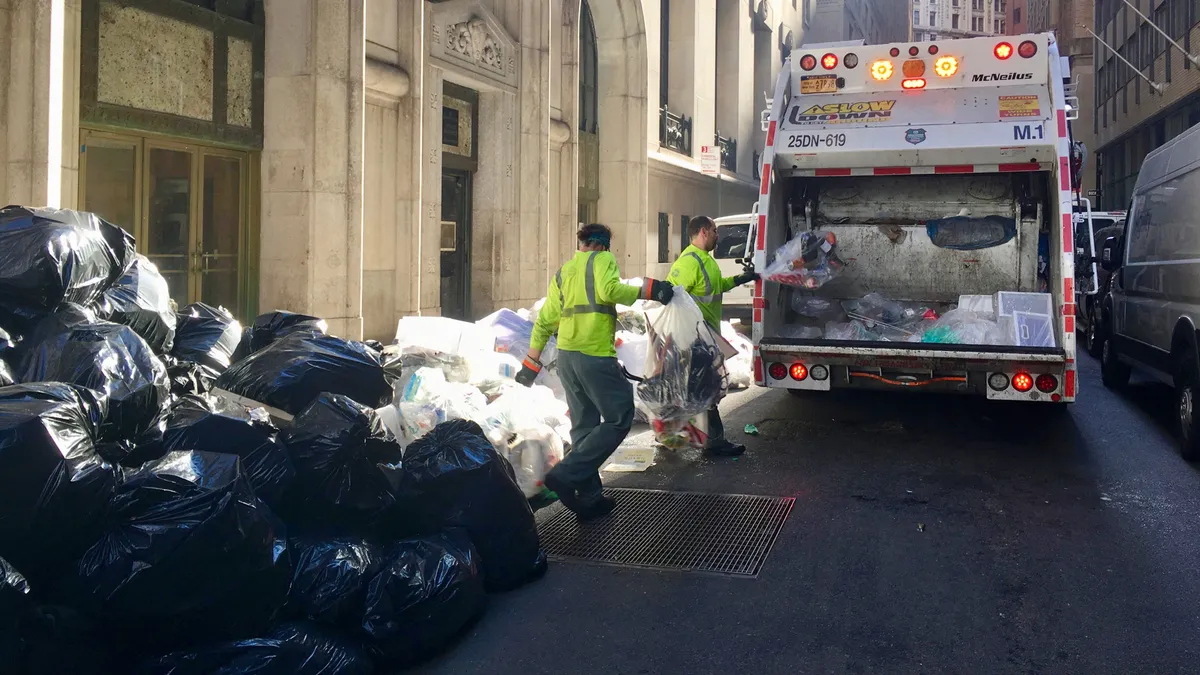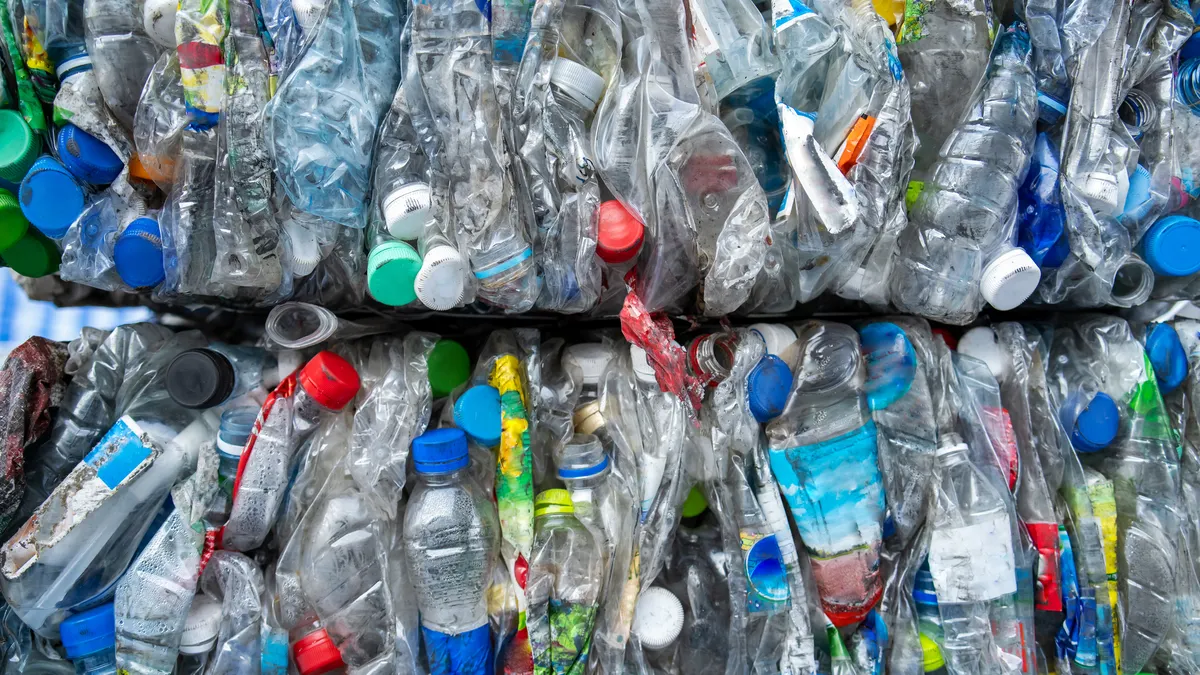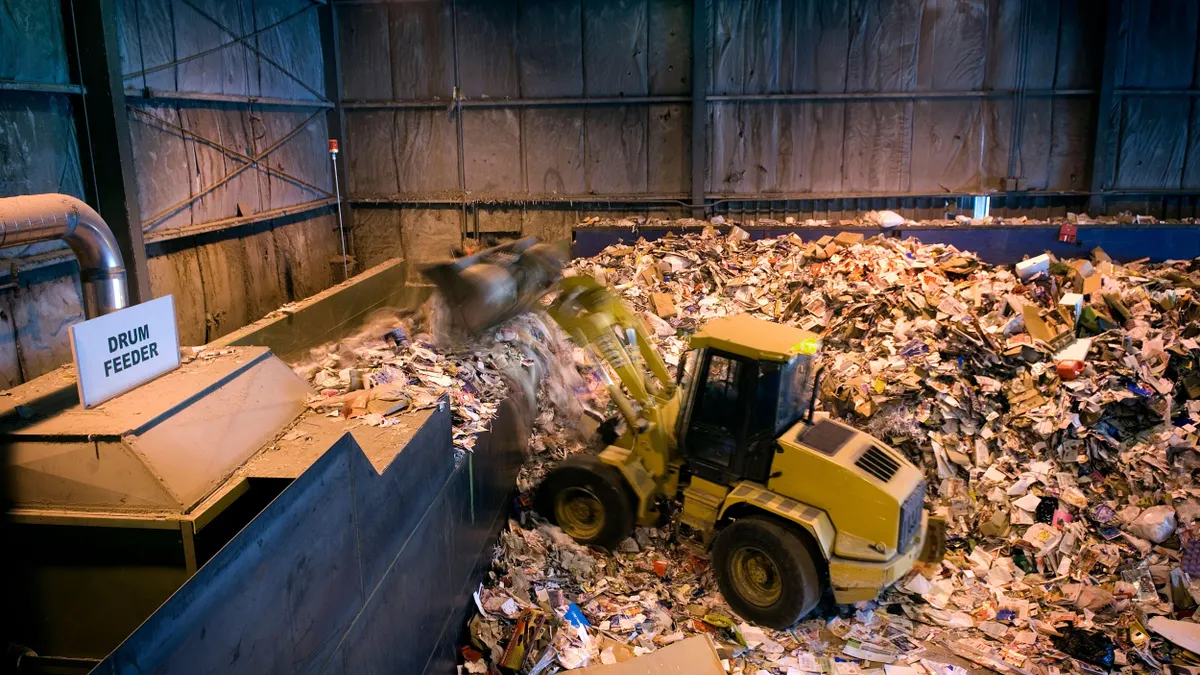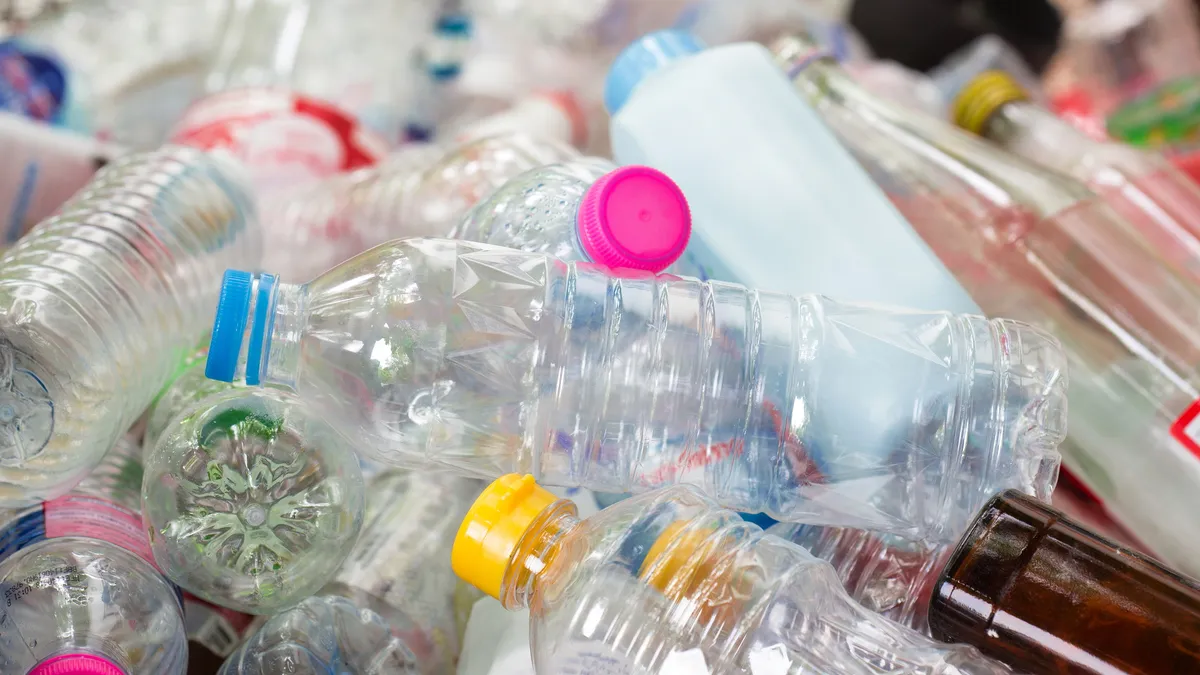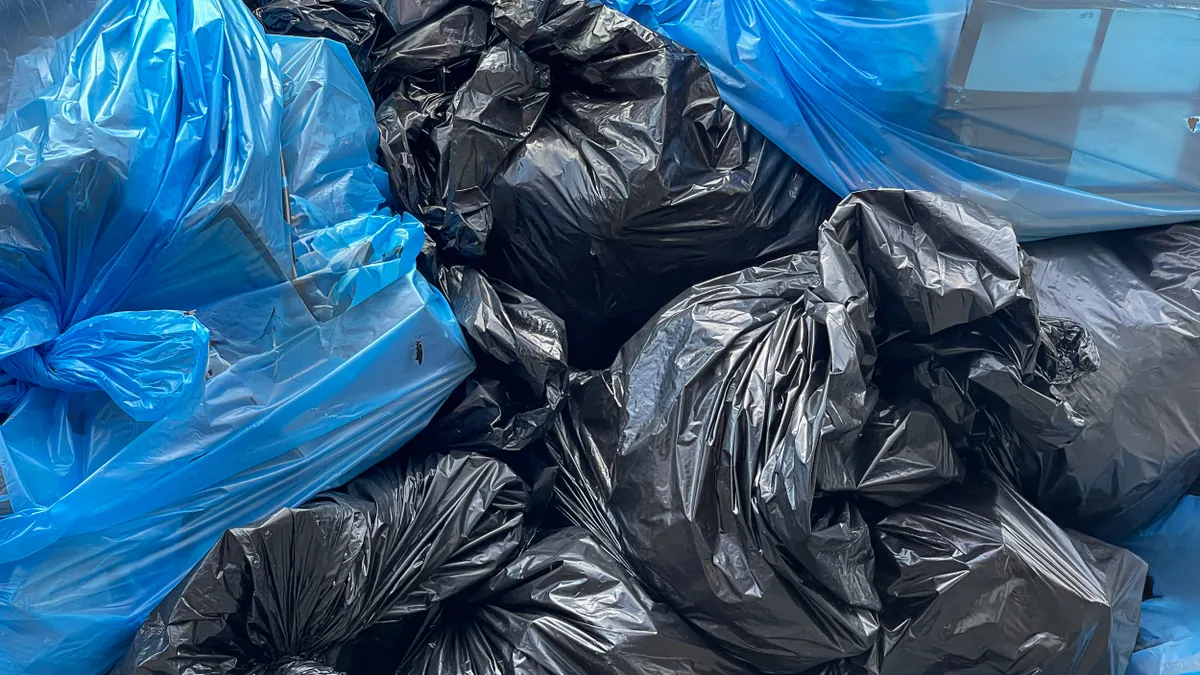With recycling rates stagnant and the city behind on its waste diversion goals, New York residents and activists testified at a solid waste hearing Tuesday with perspectives on how to catch up.
During the New York City Council’s Committee on Sanitation and Solid Waste Management hearing, speakers urged the city and its sanitation department to direct more resources to public recycling education, advocated for more organics collection programs and suggested ways to incorporate input from underserved residents.
In 2015, then-Mayor Bill de Blasio pledged to reduce landfill disposal 90% by 2030, but the city has been slow to meet that goal, speakers testified at the hearing.
Several speakers expressed specific concerns with what they consider a lackluster curbside recycling diversion rate. The Department of Sanitation’s diversion rate goal is 23% for the year, but the actual diversion rate for Fiscal Year 2022 was 17%. That was down slightly from the previous year and about a percent down from both 2020 and 2019, according to the recent Mayor’s Management Report. When factoring in drop-off programs and other collection mehtods, the rate was 19.6%, the report states. In 2022, DSNY collected 616,100 tons of recycling, down from 692,400 tons in 2021.
Council Member Sandy Nurse, chair of the sanitation committee, introduced a bill in April that would require DSNY to report on the city’s progress toward sending zero waste to landfills. It would also require the city to meet the 2030 zero waste goal. It’s part of a larger package of zero waste legislation introduced in April.
“The city’s goal of sending zero waste to landfills by 2030 must be mandated and tracked – and the bills to improve access to community recycling and introduce universal curbside composting are essential in getting us there,” Nurse said in a statement.
More expansive organics diversion programs are also needed to divert waste from landfills, said Department of Sanitation Commissioner Jessica Tisch. “Organics is the biggest opportunity we have to reduce the waste stream,” she said. The material is about a third of the waste stream, “but we divert virtually less than 1%.”
New York City is expected to start its curbside organics program in Queens next month, which would cover about 2.2 million residents. Tisch said the program is the largest in the country “as well as the cheapest and easiest to use — that’s a driver of success.” The city has previously offered curbside programs in select areas, but the Queens rollout is the largest-scale effort to date and has the biggest focus on making it accessible to a wide range of residents in the borough, DSNY says.
Many speakers voiced concerns that the Queens rollout hasn’t prioritized community outreach and education, especially for residents who speak languages other than English, who live in dense New York City Housing Authority buildings or who may not see social media posts because of lack of internet access. Some also urged DSNY to make the program mandatory.
Speakers also asked the city to change the rollout schedule, which currently calls for pausing weekly service late in December and resuming in March. Pausing the program will make it less effective and reduce residents’ confidence in the system, they said.
During public testimony, several participants, including the Natural Resources Defense Council and city solid waste advisory boards, advocated for a bill that would mandate universal residential composting by the end of 2023 for most of the city, as well as a bill requiring easily accessible organics drop-off sites. Those bills are part of the zero waste bill package introduced in the spring.
A variety of organics diversion methods would help make the process more accessible to New Yorkers, said Oliver Wright, speaking on behalf of SWABs in Brooklyn, Manhattan, Queens and the Bronx. “A combination of drop-off sites, local processing facilities, community gardens and micro haulers would have a visibly transformative effect,” he said.
Tackling single-use plastics is another opportunity to reduce waste in landfills, speakers said. Several testified in support of Nurse’s bill that would study single use plastics use in the city with the goal of reducing or eliminating their sale and distribution.
Others called for better enforcement of the state’s plastic bag ban and local recycling ordinances, saying limited awareness about the rules has been detrimental to the city’s diversion goal. Along with better enforcement, they said, New York City should spend more money and resources on frequent and consistent recycling education.
“People have been persuaded to do a lot more difficult, less convenient, and sometimes less productive things than recycling properly,” said Tom Outerbridge, general manager for Sims Municipal Recycling, the city’s processor. “I wouldn't give up on getting residents to do the right thing.”
Any city efforts to improve recycling and waste systems need to also include sanitation workers’ voices and expertise, as well as fair wages and benefits, added Miguel Martinez, a union steward and machine operator at a Bronx transfer station. “We offer a great deal of knowledge,” he said.



